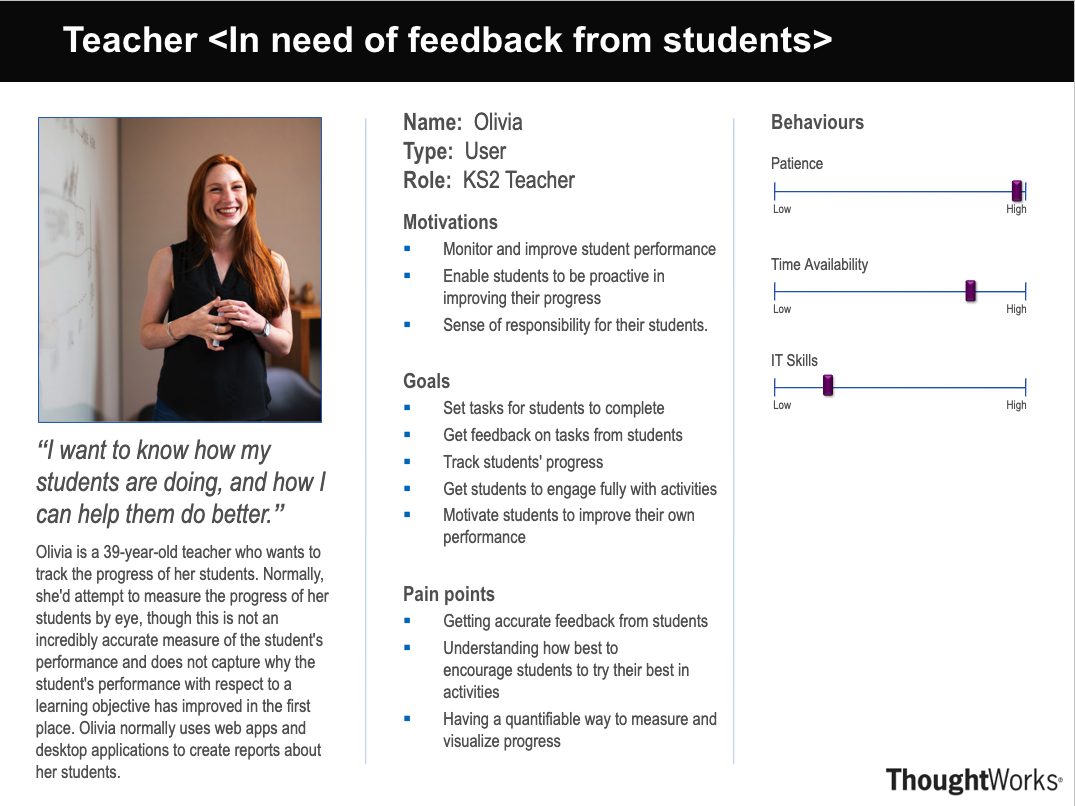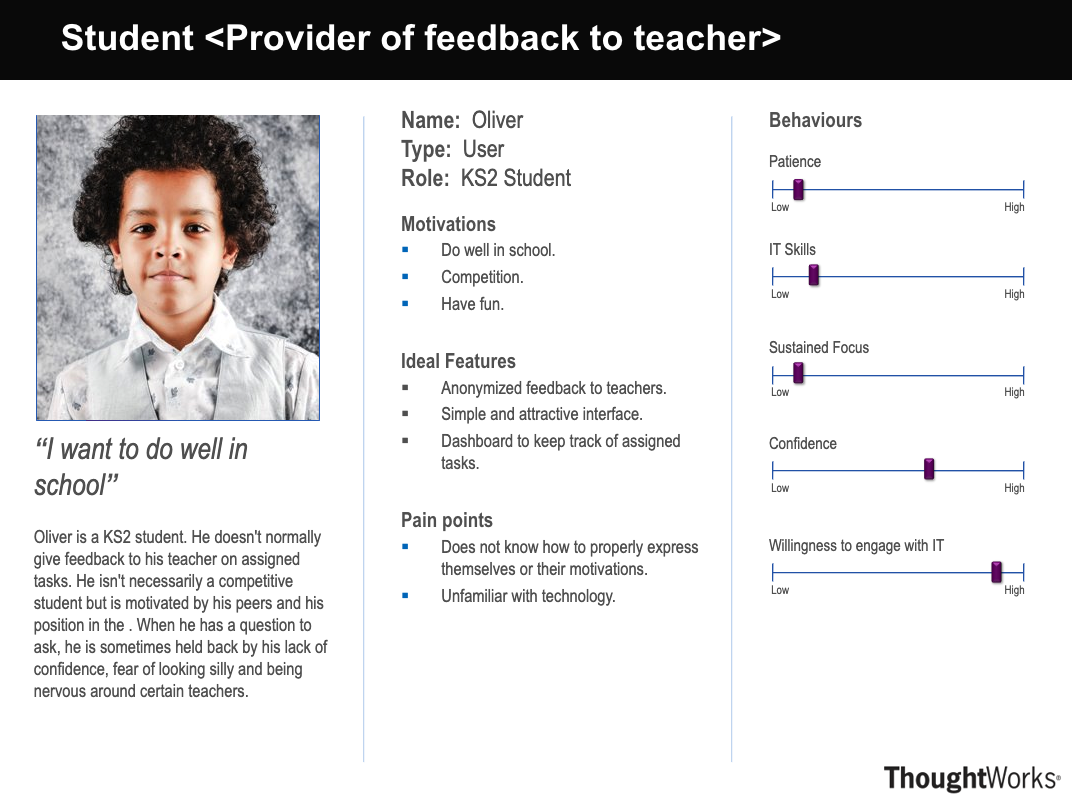Week Two: Developing Personas and Scenarios
Further Requirements Gathering
After our first meetings with our client, in which we identified who our users primarily were, we probed further into the problem description and the users (personalities and contexts of use). To do this, we decided to implement a series of unstructured interviews with our pseudo-users (given the nature of this project, we were only able to interview our client and pseudo-users as we did not have permissions to interview anybody else). Semi-structured interviews worked perfectly for us - they allowed us to stick to a series of questions, ensuring that we got an answer for every question that we had prepared, but also allowed us to probe deeper where necessary. All questions in these interviews were reflective and qualitative, giving us a better insight into the thought processes of our pseudo-users.
Once these interviews had been completed, we analysed the results and concluded that the key pain point behind our initial problem was the fact that teachers were largely unable to obtain reliable feedback from students on what motivated them to do particular tasks and activities. Realising the importance of this finding, we created personas (evidence-based representations of our generic user classes) and scenarios (evidence-based contexts of use of each of our users) to represent the motivations and desires of our users, making them more understandable to us and allowing us to challenge our assumptions about them. We anticipated that this would later assist us to ensure that every decision that we made in the design and development life cycle was the right one in the context of the user.
Developing Personas
In addition to analysing the results of our semi-structured interviews, we compiled information about our users from other sources including academic journals and blog posts.
We compiled the results of this research into concise personas based on the template provided by Dr Chris Evans, HCI lead for this module. These are displayed below:


Developing Scenarios
Our interviews with our client and pseudo-users brought about a number of key revelations to the context in which a problem arises, and hence the context of use in which our solution to the problem may be applied. Such key revelations included: our solution is intended to be used not just in the classroom but outside during activities where there is hardly any time to respond or provide feedback. Moreover, activities may actually be prescribed on our feedback forms, which has great implications on the design of our solution.
Accordingly, we developed the scenarios below:
Teacher
During her working day, Olivia plans the lessons and activities that her students are going to do and has a think about how she can make her lessons more engaging. After she has thought this through, she sits down at her teacher’s desk in the classroom with her computer and logs in to the activity league platform, where she is able to quickly add a new task and an associated series of feedback questions in addition to a due date for her students.
Student
After completing a school task, Oliver is told by his teacher to fill in a feedback form. It is at the end of an activity – Oliver is tired and wants to talk to his friends (or family, if done at home). He opens the activity league web app, logs in, selects the appropriate task and is given a maximum of 10 questions, of which all are Likert scales (except two short response questions at the bottom). He is happy the tasks are short, and if he doesn’t remember something that he was introduced to in an activity, he clicks a link to a learning resource which reminds him of the key points. The process takes a maximum of a few minutes.